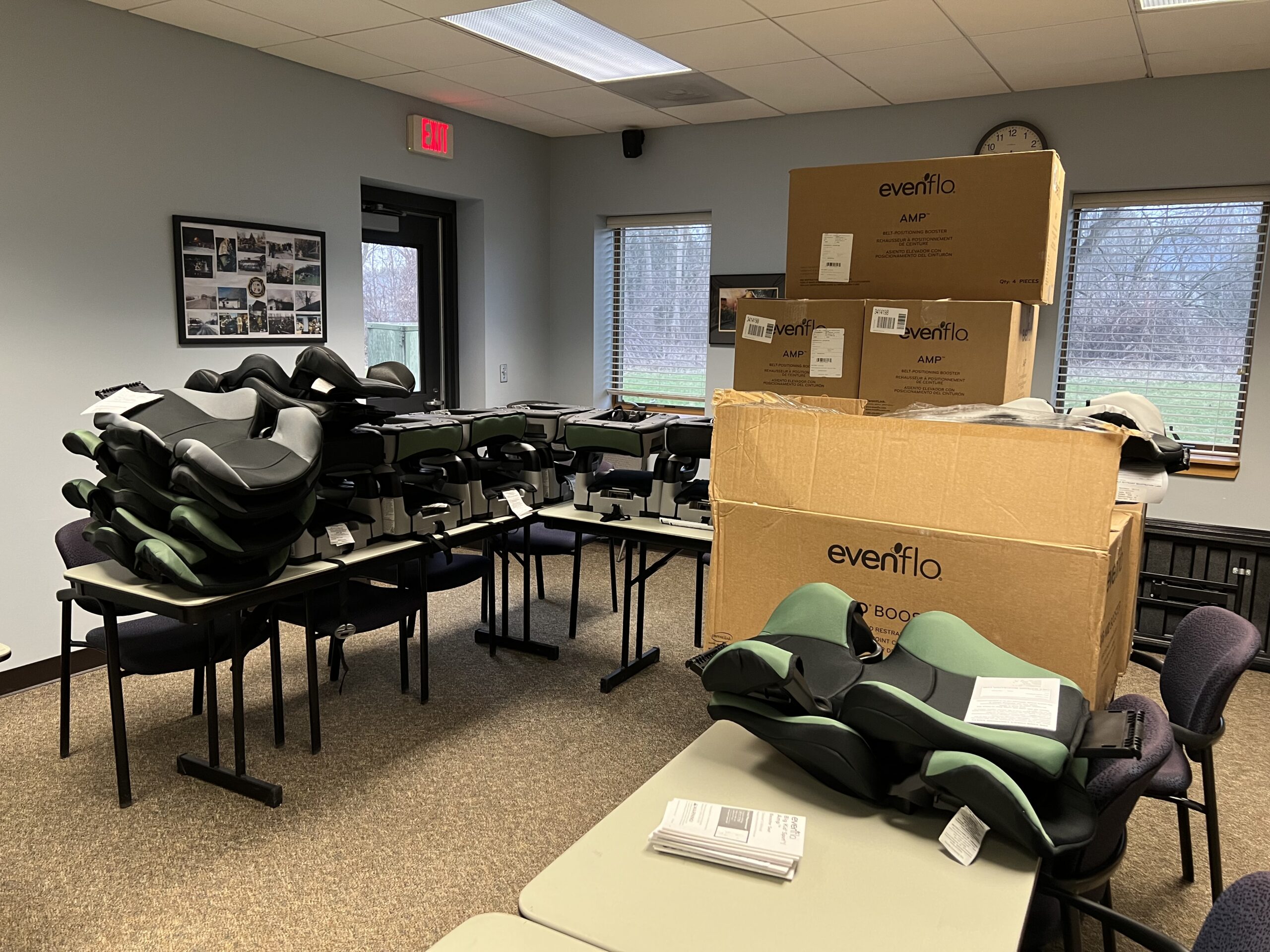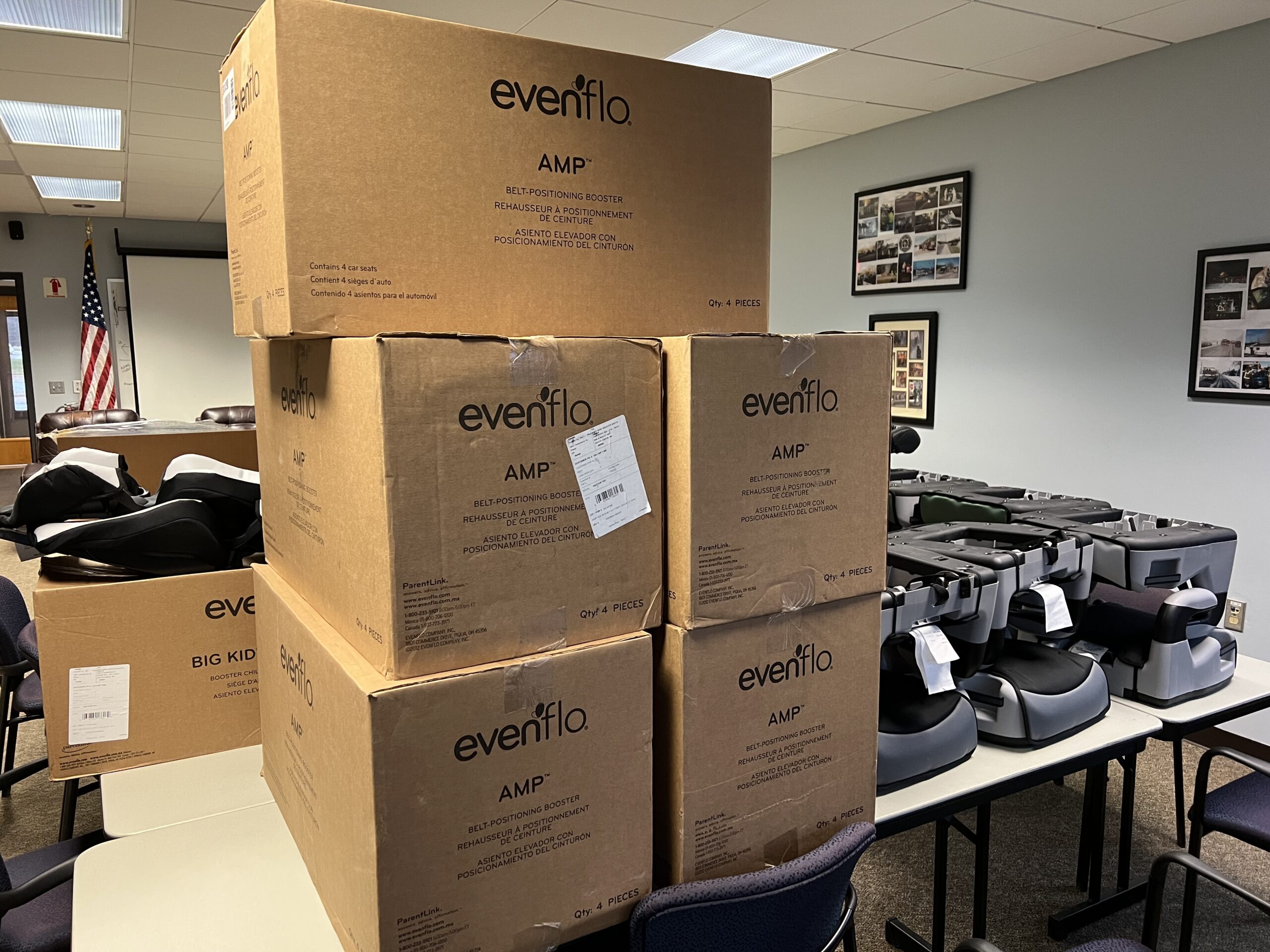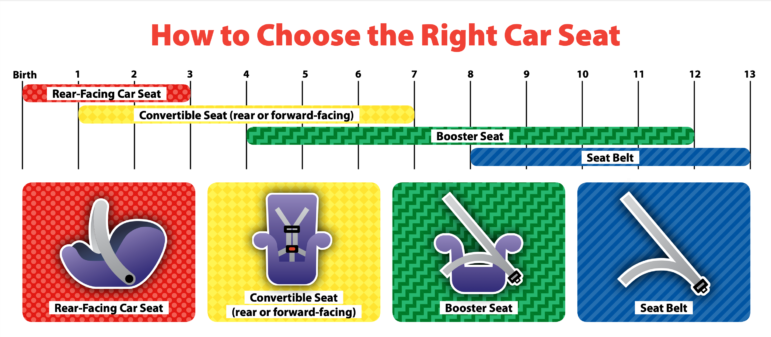The DeWitt Township Fire Department will get 15 high-back booster seats this week in a program to promote child safety on the road.


The free booster seats will be available to eligible, low-income families, said Kara Rueckert, occupant protection program coordinator with Michigan’s Office of Highway Safety Planning, which administers the program funded by the National Highway Traffic Safety Administration.
Though this program has been going on for some time, it’s just making its way to DeWitt.
“I think people are just starting to find out that I’m a child passenger safety technician,” said Laura Plaza, the Dewitt Township Fire Department’s certified technician. “I’m having people starting to tag me in posts or reach out to me via phone or email to schedule car seat checks or installations.”
Plaza said she’d do a check once every month or two in the past, but now she’s doing several a month.
Plaza cites education about car seat safety as the reason for this rising interest, especially with first-time parents and hospitals that make sure newborns leave safely.
Offering more education about car seat safety is a major goal of the Office of Highway Safety Planning. With education, it hopes to provide parents the tools to keep their children safe, said Rueckert.
Already, Michigan’s Child Passenger Safety Law requires all children under 8 years old and below 4 foot, 9 inches to be secured in a car seat until their age or height exceeds minimum requirements.
The height requirement, though, acts more as a recommendation, said Plaza.
“Parents kind of graduate them from the forward-facing seats just to a seatbelt,” Plaza said. “It’s kind of a missed opportunity for additional safety for the child.”
The leading cause of unintentional death in 2019 among children aged 0 to 14 was motor vehicle crashes, according to Michigan’s Office of Highway Safety Planning.
Additionally, the Wayne State University Transportation Research Group found that 70-80% of child restraint devices – such as car seats and boosters – were improperly used to some degree, which creates more risk of injury to children in the event of a crash.
The lead author in the 2018 report, Timothy Gates, said that misuse statistics were pretty much well over those numbers for the past decade, and that improper use was worse for the more complex car seats than boosters.
Car seats are for children aged 0 to 2, while the kinds of booster seats DeWitt will distribute are for larger kids, said Gates. Car seat misuse is especially concerning because the smaller the child is, the more safety they require.
It’s best to keep kids in rear-facing seats until their legs are too long and they have to be transitioned to a forward-facing seat, rather than use the recommended age of 2 years, Gates said.
“It’s easier to work off age, but those recommendations are usually not conservative enough,” Gates said.
Plaza also said to choose a seat based on size versus age, and that there is no single brand or type of car seat that can be deemed safest or best for any child.

“Whichever one is the best fit for your child and vehicle is the best option for you,” said Plaza.
Plaza hopes the community will take advantage of the chance to ensure kids are riding safely, and if the department sees a greater need for any of the four types of booster seats offered in the program, Plaza said she will try to ensure those needs are met.